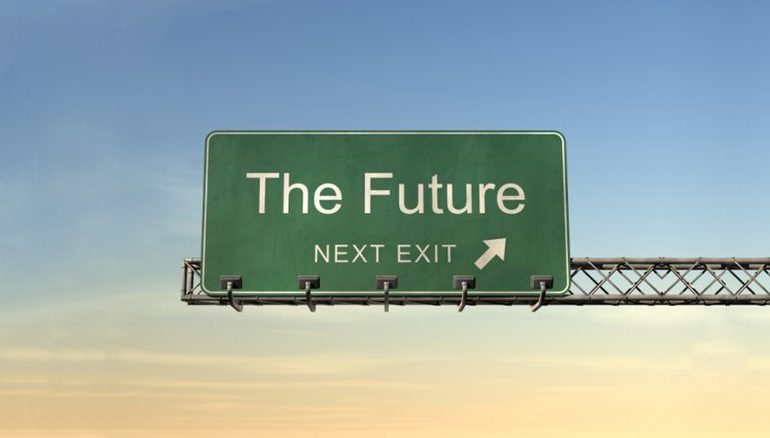This article originally appeared on CMO.com.
When it comes to thinking about the future, it’s fun to think about the “stuff.”
How small will our phones be? How big will the screens be? Will we still be communicating in 140 characters or less, or will language have reverted to hieroglyphics comprised of emojis? What will technology make easier? What new challenges will it create? Will we finally have robot butlers creating beautiful four-course meals out of packets the way the Jetsons led us to believe? The world moves so fast today that even the most far-fetched ideas seem to be at our fingertips.
Thinking about how this will affect our personal lives is fun. Thinking about how this will impact brands is an utterly daunting task. The breakneck speed at which we operate today has brought one concept back to the forefront–relevancy.
How do you convince someone that a brand is relevant when the landscape, which it needs to be relevant in, keeps changing and evolving? The good news is that the core components of relatable brands haven’t changed. Relevant brands today, like 100 years ago, are relatable, practical, and above all else, provide meaning in the lives of their audiences who matter most.
Take, for example, GE, a conglomerate that is more than 100 years old, but has positioned itself to be more relevant today than some newer brands. The tag the company uses today across all business units–“Imagination at Work”–is built on the ethos of its founder, Thomas Edison, and speaks to the impact GE’s inventions, from the lightbulb to the industrial Internet, have had on the lives of ordinary people.
While the world has changed around it, GE has stayed relevant in this day and age by keeping its focus on purpose–the “why we do what we do”–and using this to lead every experience, whether that experience is physical, digital, or virtual.
Relevancy isn’t luck. What it does take is a solid understanding of your brand. Who you are and why you do what you do becomes the North Star to help you navigate the innovative and creative environment of the future, focusing on the best ways to communicate this.
Here are some ways to start planning for relevancy today:
1. Accept That Your Environment Will Change
Today’s hard-and-fast rules of marketing are tomorrow’s broken ones. You’ve got to be flexible to stay on the path toward relevancy. For example, where making your brand design elements available for public use was seen as a quick way to dilute your brand’s impact and lose control of your message, today brands are using this to better integrate within their audience’s world.
When Twitter made its bird symbol available for people to use, it became something that could be integrated into places like business cards and websites, promotional materials, and app integrations. The result was an unlimited number of brand ambassadors legitimizing and promoting the brand by being able to authentically incorporate it into their own lives. Giving up control and inviting their audiences to participate with the brand ultimately allowed Twitter to make the brand infinitely more powerful.
2. Know Who You Are, Not Just What You Do
Brands aren’t relegated to 50-page guidelines anymore because they are not static. And like any other thing that is living, they have to grow and evolve in order to thrive in their surroundings. So think of your brand like you would a person. If someone asked your brand a question, how would it answer? Would it be funny? Creative? Stern? Is your brand an early adopter or a bit more timid? Knowing these details about your brand can help you to know what, where, and how to execute whenever a new experiential opportunity presents itself.
For example, when 23andMe, an over-the-counter DNA sequencing service, was getting started, the company had a marketing strategy that included signs on the highway and a blimp that used to fly over the Bay Area. It gets points for retro-creativity and it’s not a bad way to get people’s attention; however, what did that do for the brand? Was that really reaching its audience with the information that was most relevant to them? A blimp showing the Web address to a forward-thinking medical technology company was not in alignment. Had it done something clever where the message alluded to the simplicity of the blimp strategy corresponding to the simplicity of the test or flown the blimp around with a question about DNA and family health, it would have better connected the touch point to the brand itself.
While different execution opportunities are great, understanding who your brand is can help you to determine what to use and how best to use them.
3. Plan For The Audience, Not For The Technology
Every month some new unicorn darling catches the attention of the press. Most recently it was Peach, which popped up out of nowhere, was a darling for a couple months, then was gone just as quickly. New experiences move so quickly, it can feel that you’re constantly being forced to make decisions between analysis paralysis and full steam ahead. However, if you build a strategy around what’s “in” today, by the time it’s ready to go, you’re already too late.
So what’s the solution? Stop worrying about keeping up with the Joneses. Your story is unique. So why shouldn’t your execution be? Marketing strategy is bigger now than just divvying up a budget between TV, print, and digital spend. While the number of outlets over the years is going to continue to grow exponentially, it’s more than likely that your team size will not.
Limited internal resources and only 24 hours in a day means you need to figure out what makes the most sense to you. For example, Sephora designed an app as the result of watching the behavior of in-store customers. Seeing people peruse their iPhones as much as they did the shelves, Sephora learned that customers were either looking for product reviews or trying to remember what they had previously purchased. As opposed to running from mobile as a competitor, Sephora took a lead from its customers and understood this digital component was a key part of the in-store experience. Build the “right” experience–what feels organic and in line with who you are and what you’re doing, and you are less likely to fall victim to trends.
Brands that will thrive in 2030 will start to think about these things today. While execution and marketing environments change, the key to future brand relevancy is the same as today: Purpose-driven brands win.
Jenna Isken is senior marketing manager at Siegel+Gale. For more insights, follow her on Twitter: @jennaisken


